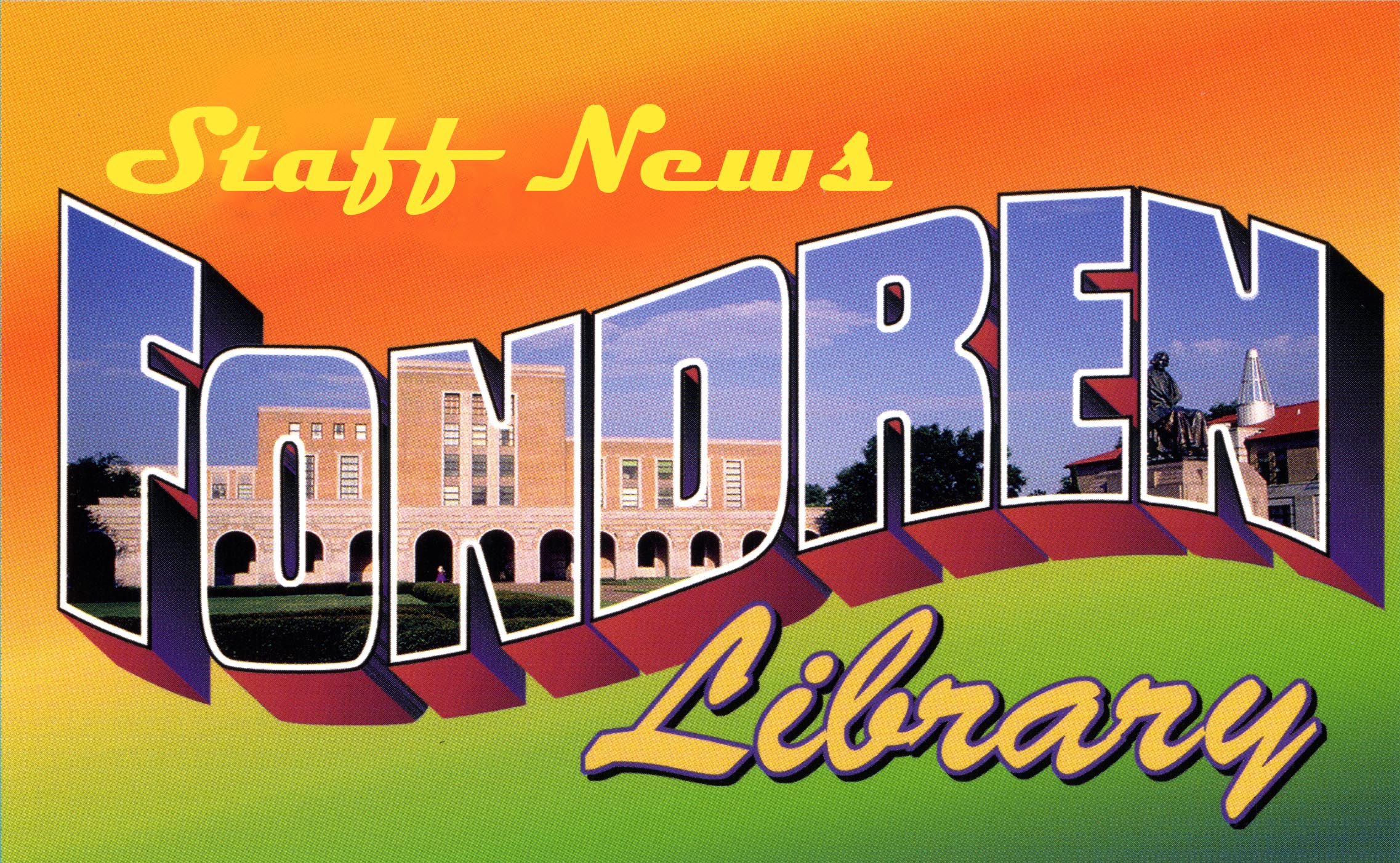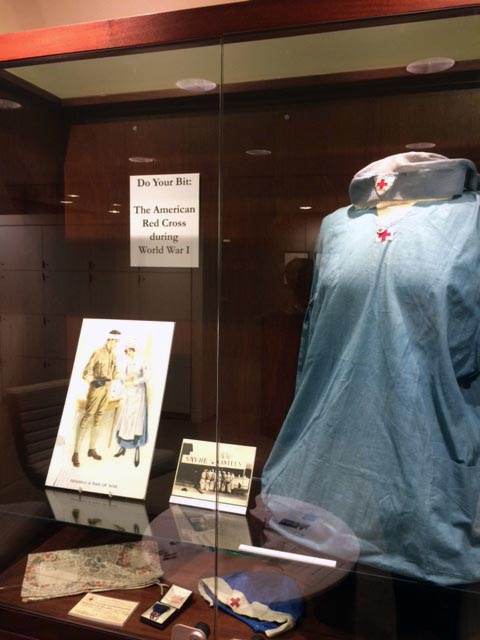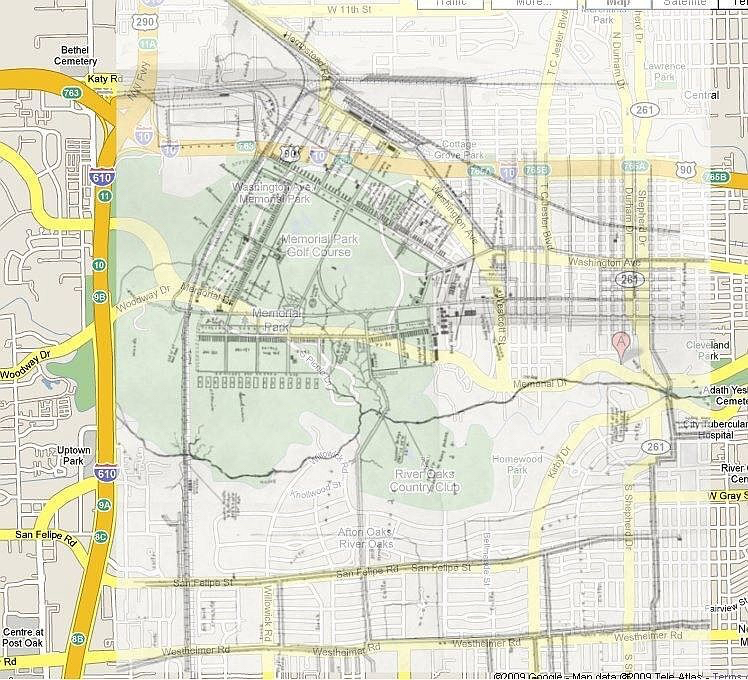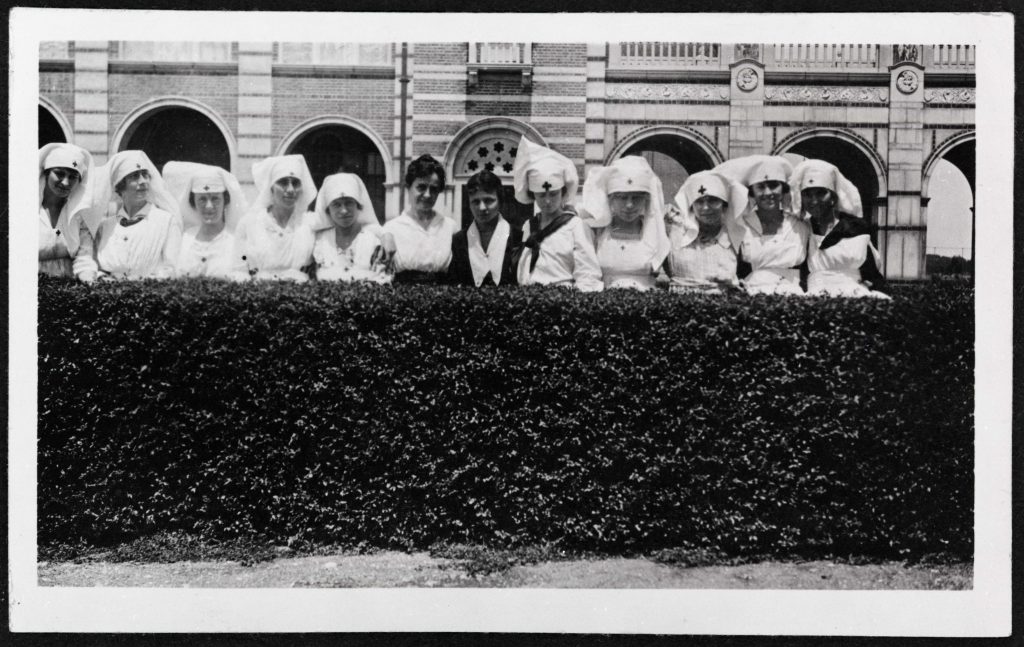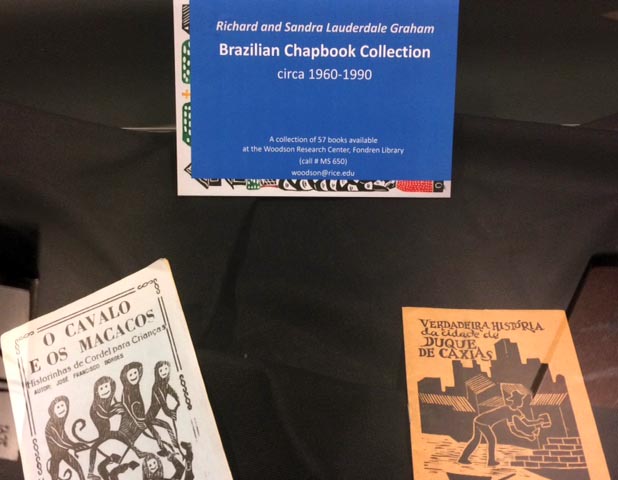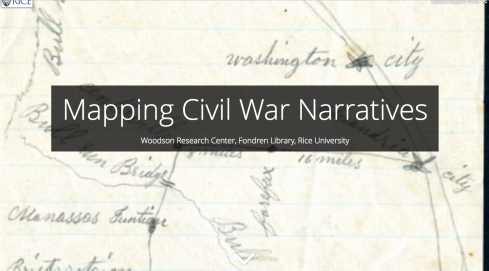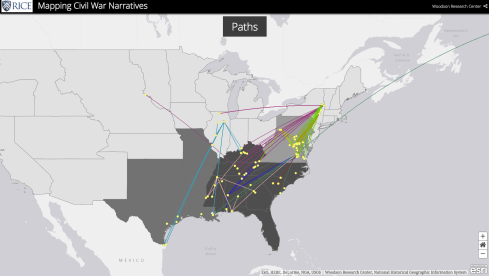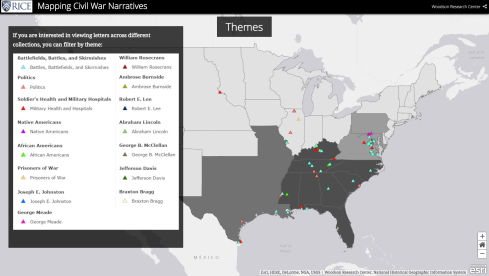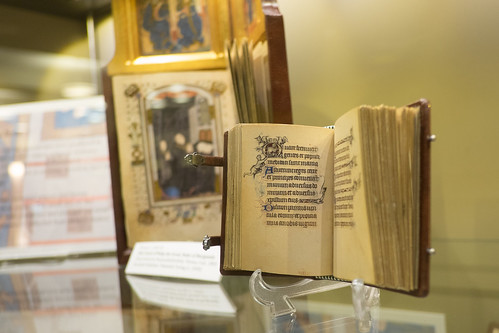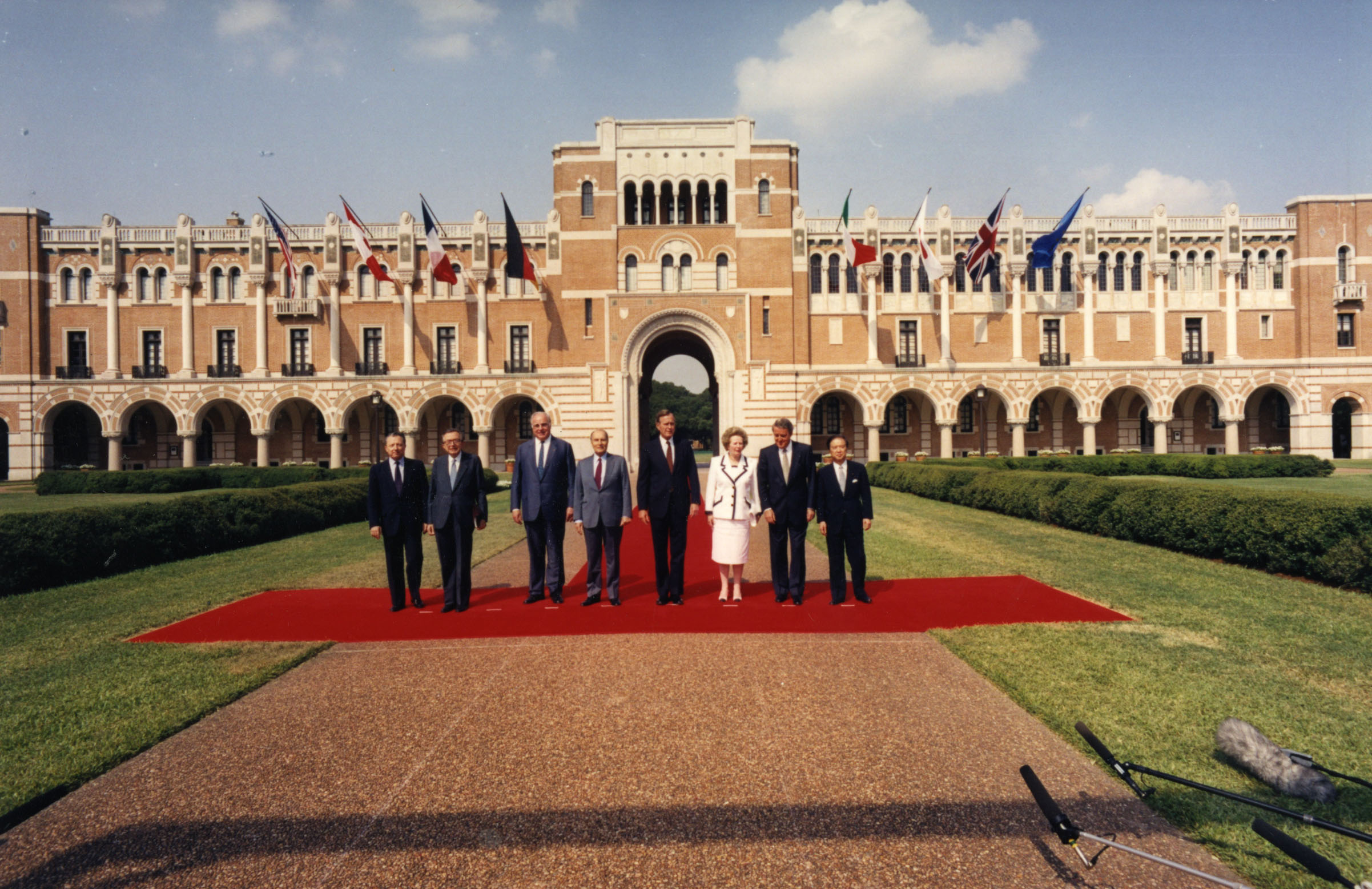Woodson Research Center has several new exhibits now on display in Fondren and in the RMC.
2017 is the centennial year of the U.S. involvement in World War I (1914-19). In collaboration with Rice University’s Anthropology Department, an exhibit in the cases near the east entrance of the library focuses on Camp Logan, a World War I training camp once situated in what is today Memorial Park in northwest Houston.
“Camp Logan in Memorial Park: Houston’s Hidden History” was co-curated by Rice undergraduate student Dylan Dickens (Martel ’18), Dr. Jeffrey Fleisher, and Rebecca Russell. Although the centennial is the inspiration for the exhibit, Rice University faculty, staff, and students have been involved in researching and preserving Camp Logan’s history for some time; the Woodson Research Center has a collection of papers related to a soldier’s time at the camp, and the Anthropology Department have been investigating Camp Logan archaeologically since 2015. These collections and the results of this research form part of the exhibit.
In the 1st floor hallway, “Camp Logan Centennial postcards” features selections of historic postcards depicting images of soldiers training at Camp Logan. The postcards are on loan from the Robbie Morin Camp Logan Collection.
Inside the Woodson Research Center, “Do Your Bit: the American Red Cross during World War I” features selections from Woodson Research Center collections about the American Red Cross during World War I and local efforts at Rice Institute and Houston to support the war effort.
In the flat cases outside of the Woodson Research Center, a small exhibit features selections from the Richard and Sandra Lauderdale Graham Brazilian Chapbook Collection. The inexpensively printed booklets or pamphlets known as cordel literature (from the Portuguese term literatura de cordel, literally “string literature”) originated in rural northeastern Brazil as humble poets and artists used this means to reach a popular audience. Containing folk novels, poems, and songs illustrated initially with woodblock prints and later with photo images, these booklets were sold at fairs and by street vendors. Production of the booklets reached a peak in the 1920’s and 1930’s, but the present collection makes clear that they were still being created in the 1960’s and 1970’s.
In the Rice Memorial Center trophy case, an exhibit in conjunction with Rice Athletics’ new branding initiative, highlights the evolution of the Rice Athletics mascot Sammy the Owl through University Archives’ photographs, memorabilia, and ephemera.
